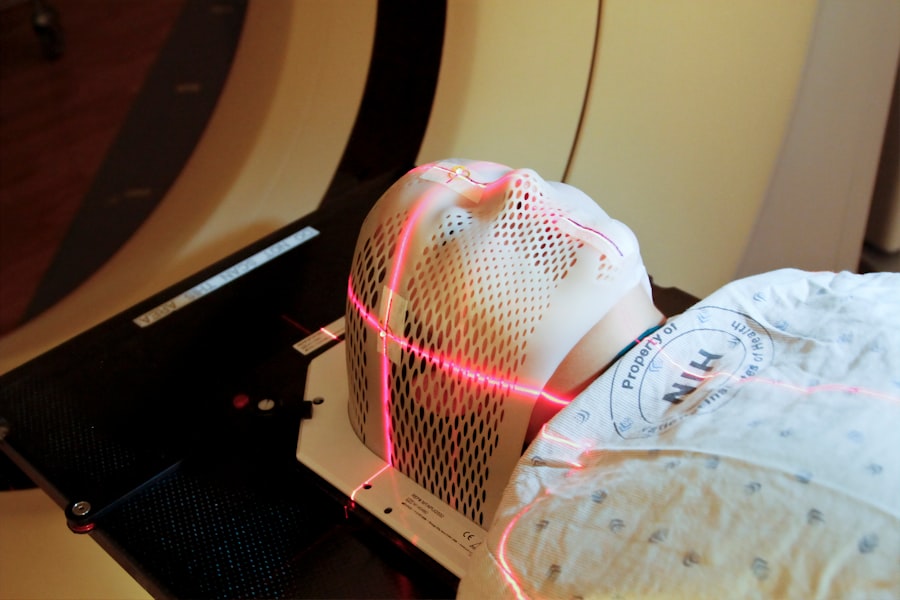Laser hair removal is a popular cosmetic procedure that uses a concentrated beam of light (laser) to remove unwanted hair. The laser targets the pigment in the hair follicles, heating them up and damaging the follicle to inhibit future hair growth. The process is effective in reducing hair growth and can lead to long-term hair reduction. It is important to note that laser hair removal is not a one-time treatment and typically requires multiple sessions to achieve the desired results.
During the laser hair removal process, the technician will adjust the laser equipment according to the color, thickness, and location of the hair being treated, as well as your skin color. This is to ensure that the laser targets the hair follicles without damaging the surrounding skin. The procedure is relatively quick and can be performed on various body areas, including the face, legs, arms, underarms, bikini line, and more. It is important to consult with a professional to determine if you are a suitable candidate for laser hair removal and to understand the process in detail before undergoing treatment.
Key Takeaways
- Laser hair removal targets hair follicles with concentrated light energy to inhibit future hair growth
- Factors affecting the number of sessions needed include hair color, skin color, hair thickness, and the area being treated
- General guidelines suggest 6-8 sessions for optimal results, with touch-up sessions as needed
- Different body areas require varying numbers of sessions, with larger areas like the legs typically needing more sessions than smaller areas like the underarms
- Consistency in treatment is crucial for best results, with sessions spaced according to the hair growth cycle
- Progress should be monitored regularly, and the treatment plan adjusted as needed for the best outcome
- Consulting with a professional is essential for personalized advice on the number of sessions and treatment plan tailored to individual needs
Factors Affecting the Number of Sessions Needed
Several factors can affect the number of laser hair removal sessions needed to achieve optimal results. These factors include the color and thickness of the hair, the area being treated, and individual skin type. Dark, coarse hair responds best to laser treatment as it has more pigment to absorb the laser light. On the other hand, light-colored or fine hair may require more sessions as it is less responsive to the laser.
The area being treated also plays a role in determining the number of sessions needed. Larger areas such as the legs or back may require more sessions compared to smaller areas like the underarms or upper lip. Additionally, individual skin type can impact the number of sessions needed, as darker skin tones may require more sessions to achieve desired results while minimizing the risk of skin damage.
It is important to have realistic expectations when undergoing laser hair removal and understand that multiple sessions are typically required to achieve long-lasting results. Consulting with a professional technician can provide personalized insight into the number of sessions needed based on individual factors.
General Guidelines for Number of Sessions
While the number of sessions needed for laser hair removal can vary based on individual factors, there are general guidelines that can provide an idea of what to expect. On average, most people require anywhere from 6 to 8 sessions spaced 4 to 6 weeks apart to achieve optimal results. However, it is important to keep in mind that this is just a rough estimate and the actual number of sessions needed can vary.
For some individuals, additional maintenance sessions may be necessary to target any remaining hair or address new hair growth. It is important to follow the recommended treatment plan provided by your technician to ensure the best possible outcome. Consistency in attending scheduled sessions is key to achieving long-term hair reduction and maximizing the effectiveness of the treatment.
Different Body Areas and Their Required Sessions
| Body Area | Required Sessions |
|---|---|
| Legs | 6-8 sessions |
| Arms | 4-6 sessions |
| Back | 8-10 sessions |
| Chest | 6-8 sessions |
| Abdomen | 8-10 sessions |
The number of sessions needed for laser hair removal can vary depending on the specific body area being treated. Larger areas such as the legs, back, or chest may require more sessions compared to smaller areas like the underarms or bikini line. This is due to the difference in hair density and thickness across various body areas.
For larger areas, it is not uncommon for individuals to require 8 or more sessions to achieve optimal results. Smaller areas, on the other hand, may require fewer sessions, typically ranging from 4 to 6. It is important to consult with a professional technician to determine the specific number of sessions needed based on the body area being treated and individual factors such as hair color and skin type.
Understanding the specific requirements for different body areas can help individuals set realistic expectations and plan for the necessary number of sessions needed to achieve their desired results.
Importance of Consistency in Treatment
Consistency in attending scheduled laser hair removal sessions is crucial for achieving optimal results. The hair growth cycle consists of three main phases: anagen (active growth), catagen (transitional), and telogen (resting). Laser hair removal is most effective during the anagen phase when the hair is actively growing and connected to the follicle.
By attending regular sessions spaced 4 to 6 weeks apart, individuals can target hair in the anagen phase at different times, ensuring that all hair follicles are effectively treated. Skipping or delaying sessions can disrupt this cycle and lead to less effective results.
Consistency in treatment also helps maintain progress and prevents new hair growth from becoming established. Following the recommended treatment plan provided by your technician and attending scheduled sessions is essential for achieving long-term hair reduction and maximizing the effectiveness of laser hair removal.
Monitoring Progress and Adjusting Treatment Plan

Throughout the course of laser hair removal treatment, it is important to monitor progress and make any necessary adjustments to the treatment plan. This includes assessing how the hair responds to treatment, any changes in hair density or texture, and any areas that may require additional attention.
Based on progress and individual response to treatment, a professional technician may recommend adjustments to the number of sessions needed or changes in treatment approach. This could include additional maintenance sessions or targeting specific areas with different settings or techniques.
Open communication with your technician about your progress and any concerns you may have is essential for ensuring that your treatment plan is tailored to your individual needs. By monitoring progress and making adjustments as needed, individuals can maximize the effectiveness of their laser hair removal treatment.
Consulting with a Professional for Personalized Advice
When considering laser hair removal, it is important to consult with a professional technician for personalized advice and guidance. A trained technician can assess individual factors such as skin type, hair color, and specific treatment areas to provide tailored recommendations for the number of sessions needed and expected results.
By consulting with a professional, individuals can gain a better understanding of the laser hair removal process, set realistic expectations for their treatment, and receive personalized advice on how to achieve optimal results. Additionally, a professional technician can address any concerns or questions you may have about the treatment process and provide guidance on post-treatment care and maintenance.
Overall, consulting with a professional for personalized advice is essential for ensuring a successful laser hair removal experience and achieving long-term hair reduction. It provides individuals with the knowledge and support they need to make informed decisions about their treatment and achieve their desired results.
If you’re wondering how many laser hair removal sessions you’ll need, it’s important to consider the type of laser being used and your individual hair growth cycle. For a more in-depth understanding of the advanced techniques and courses available for laser hair removal therapists, check out this informative article on the best advanced laser hair removal therapist course. Understanding the benefits and considerations for different skin tones is also crucial, so be sure to explore the insights provided in laser hair removal for darker skin tones. These resources can help you make informed decisions about your laser hair removal journey.
FAQs
What is laser hair removal?
Laser hair removal is a cosmetic procedure that uses a concentrated beam of light (laser) to remove unwanted hair. The laser targets the pigment in the hair follicles, damaging them and inhibiting future hair growth.
How many laser hair removal sessions will I need?
The number of laser hair removal sessions needed varies from person to person and depends on factors such as hair color, skin color, and the area being treated. On average, most people require 6-8 sessions spaced 4-6 weeks apart to achieve optimal results.
Why do I need multiple laser hair removal sessions?
Hair grows in different stages, and laser hair removal is most effective when the hair is in the active growth phase. Multiple sessions are needed to target hair in all stages of growth and to achieve long-lasting hair reduction.
Are the results of laser hair removal permanent?
Laser hair removal can lead to long-term hair reduction, but it is not guaranteed to be permanent. Some people may experience regrowth over time, and maintenance sessions may be needed to sustain the results.
Is laser hair removal safe for all skin types?
Laser hair removal is generally safe for all skin types, but the effectiveness and potential risks may vary. It is important to consult with a qualified and experienced practitioner to determine the best approach for your specific skin type and hair color.






